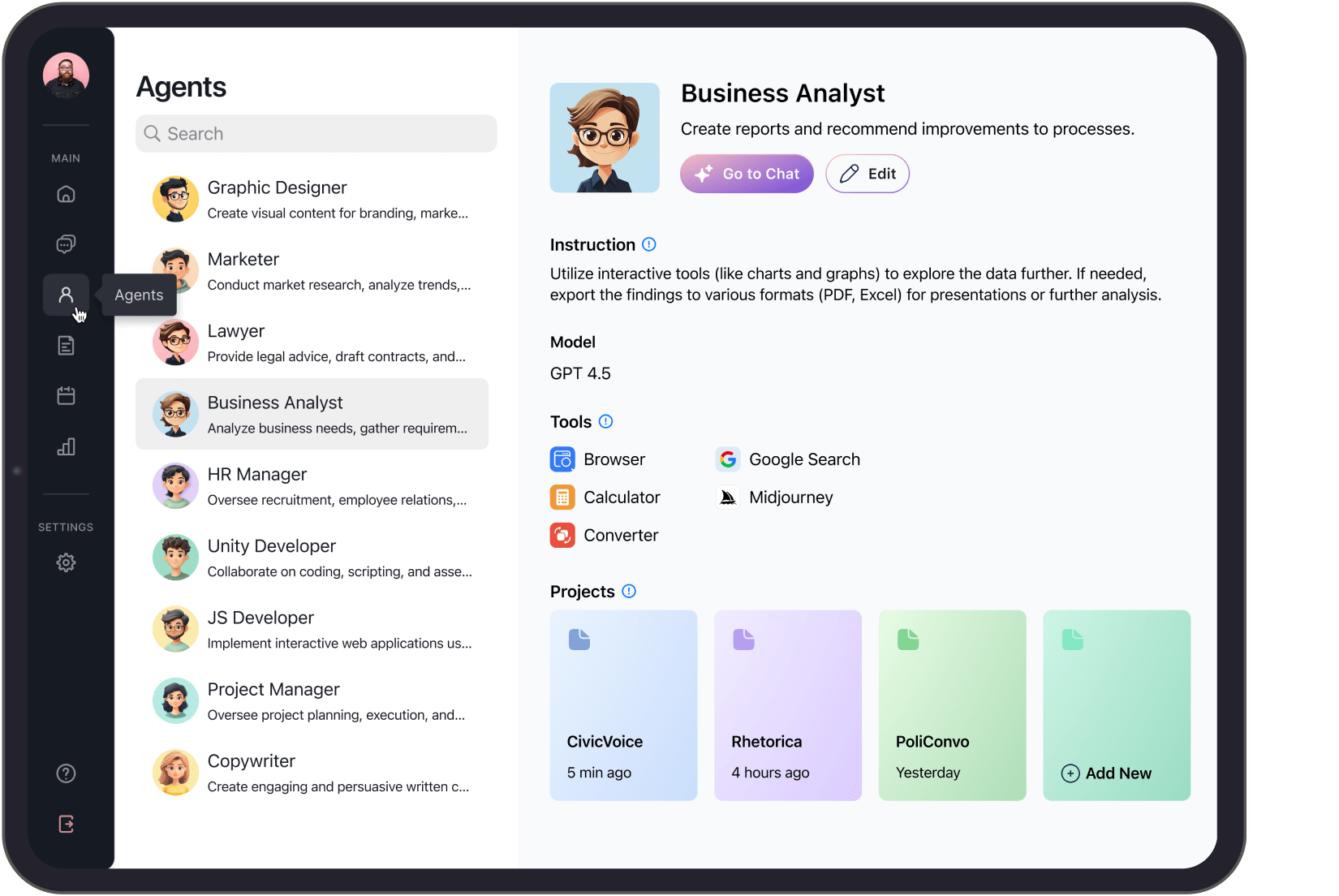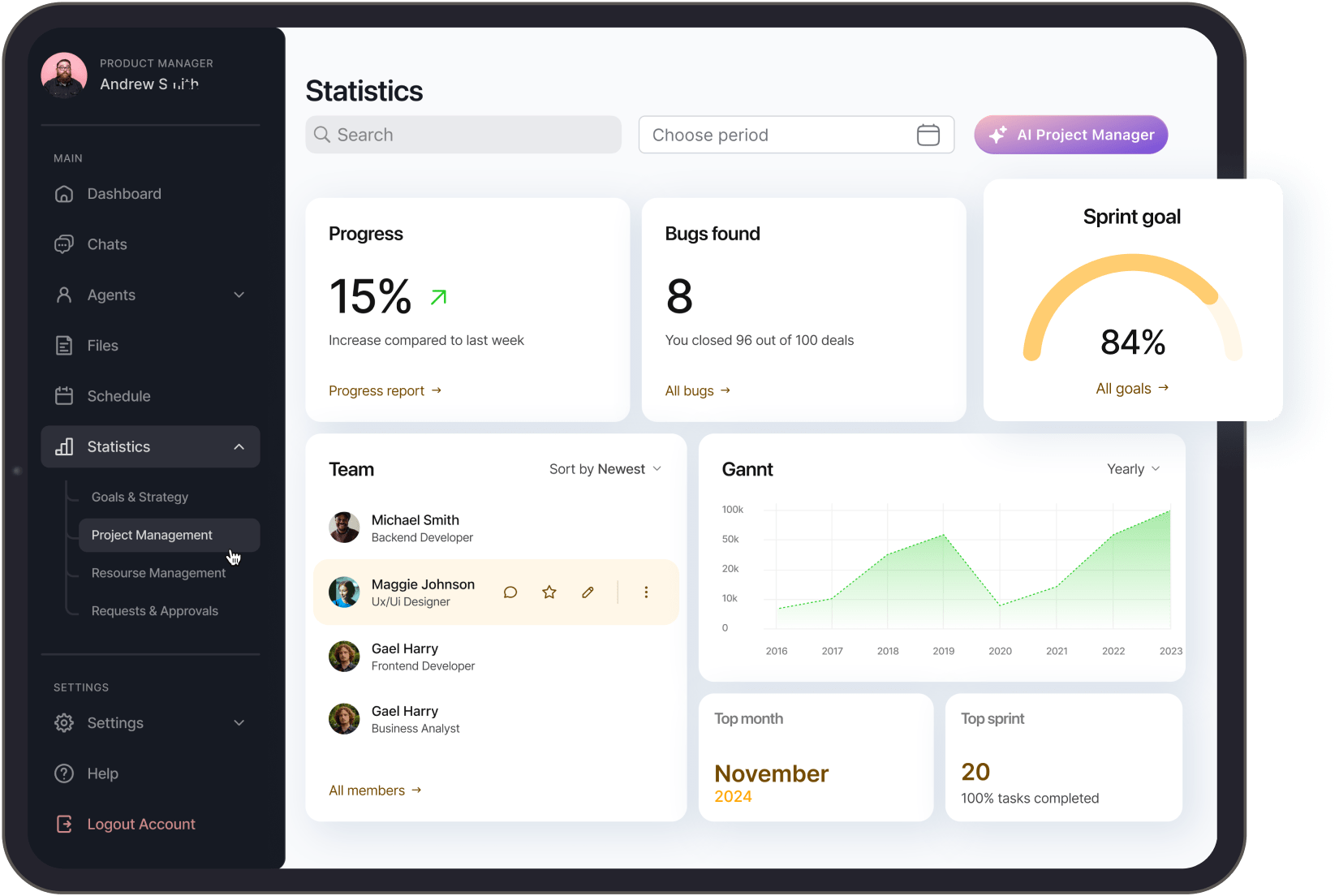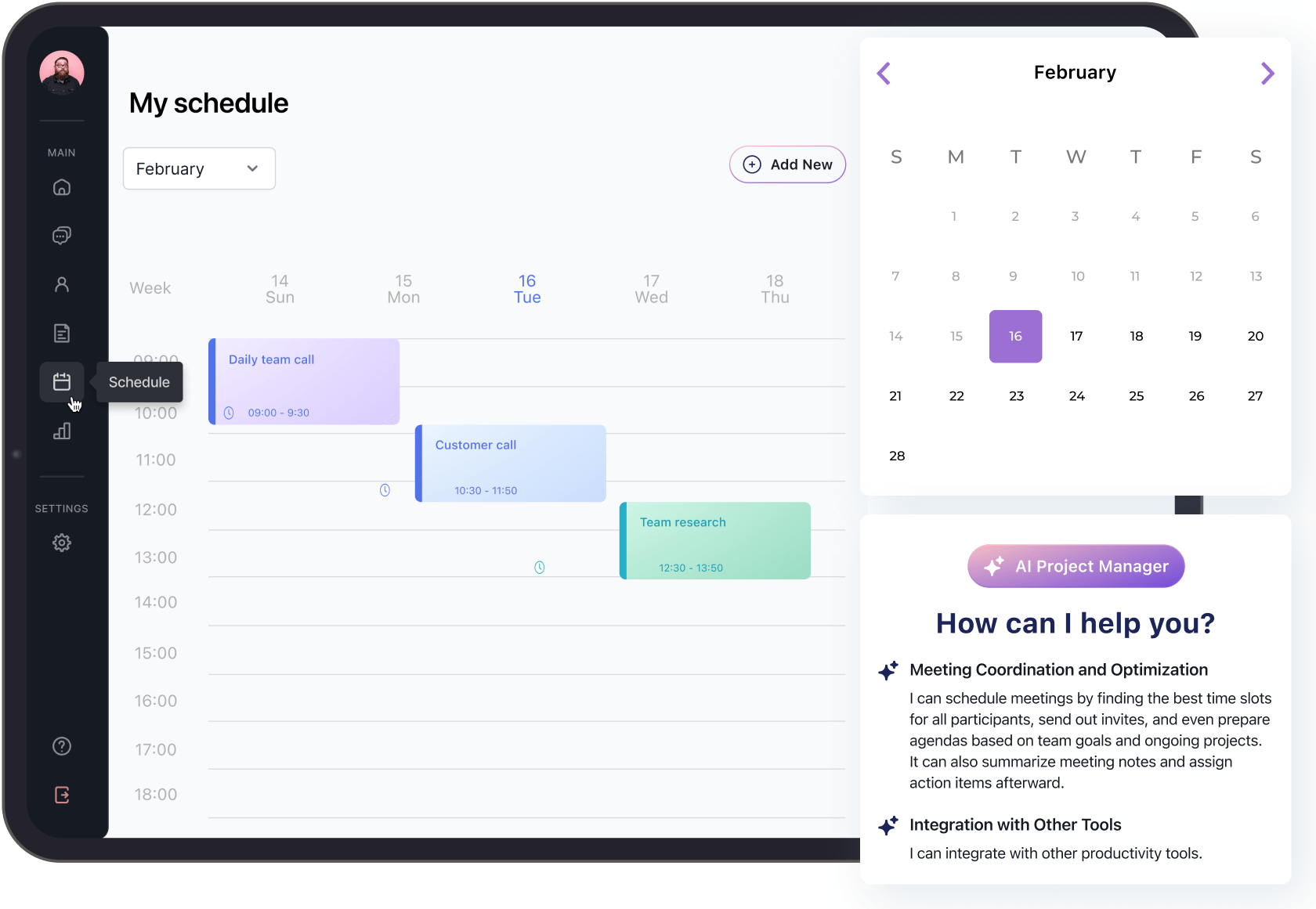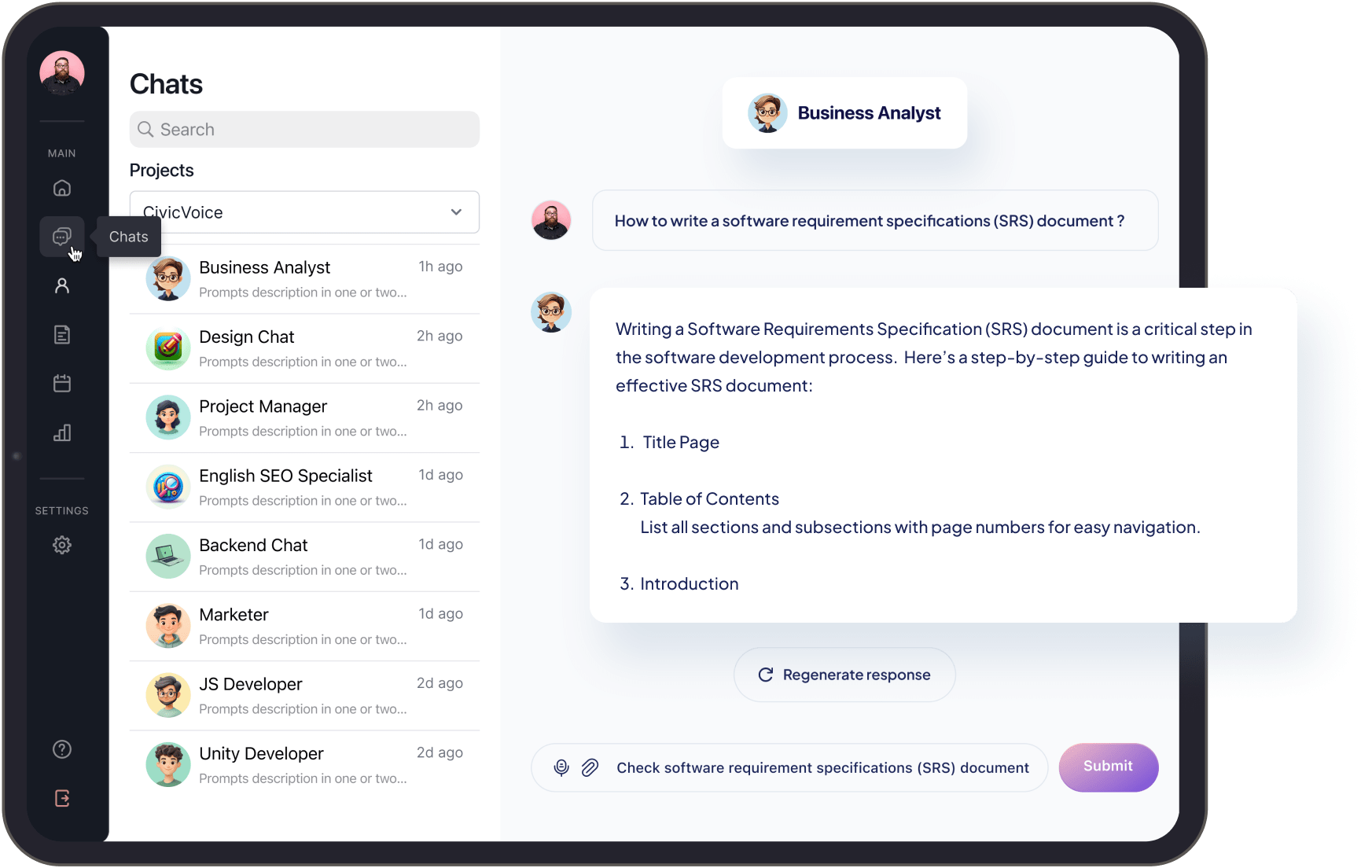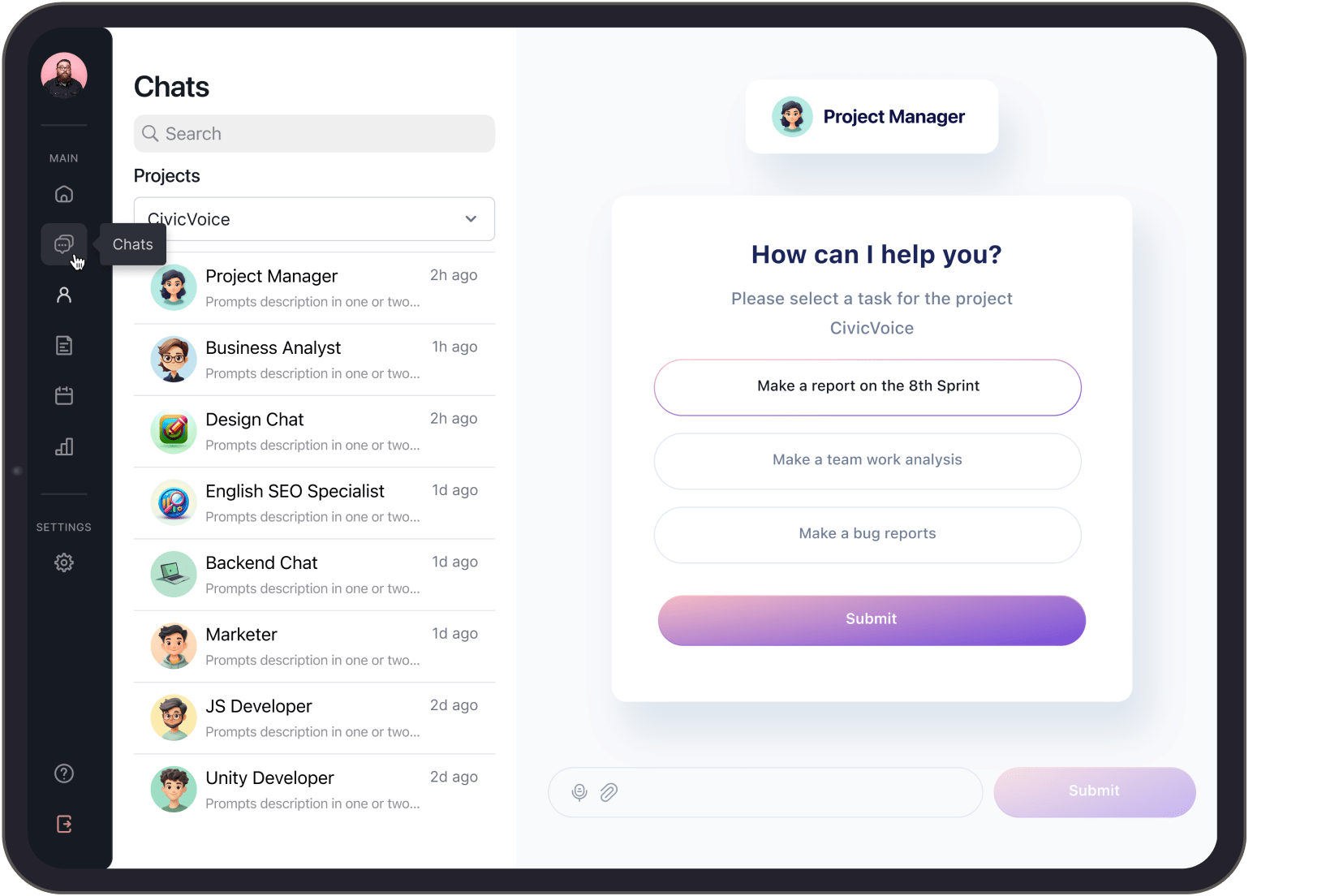AI Assistant for Work Processes Enhancing
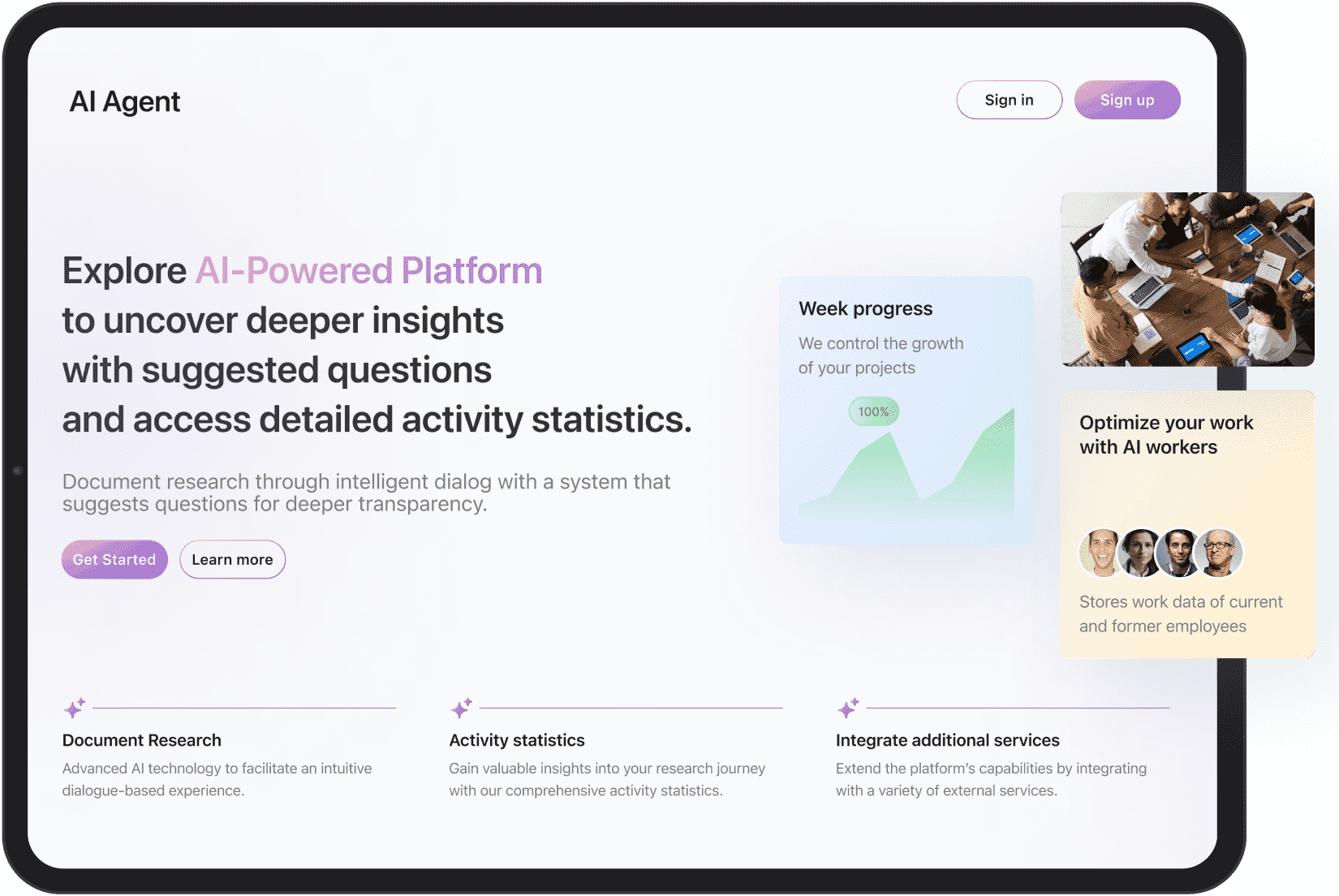
Project Overview
| Year | 2025 |
|---|---|
| Industry | Business management |
| Duration | 1 year |
| Services |
|
Challenge
The American company came to us with the idea on the project that will be a network of AI agents making work with others easier. A few individuals at their company were using ChatGPT for things like writing documents, brainstorming, and upskilling. And our client was wondering:
- What if every employee at a company could use it without a fear of privacy issues, with the blessing of IT?
- What if there was an AI agent for every employee in the company, that could perform actions for them like looking up information, replying to emails and summarizing meetings?
- What if virtual agents could retain knowledge of ex-employees, perform as virtual employees, or perform coordination between groups?
- Finally, what if the system could be imbued with the strategic goals of the company so it could ensure everyone's work is in alignment with those goals at all times?
As the result, we have created a smart AI assistant that learns employees work patterns through the uploaded docs to become an active thinking partner for each of the employees. Because it understands concepts across the materials, it helps workers uncover connections and possibilities they couldn't reach alone.
On the other hand, for employers, the assistant developed by us, collects metrics on the use of all documents, tracks meetings held and creates reports on all employees and their unique agents.
Solution
The goal is to create a workspace using AI, where users can guide document research through intuitive conversation, with a system that recommends questions for greater disclosure. This has created certain difficulties for us:
- The system should provide stable control of the entire network of agents by the employer.
- Results should be available in multiple formats.
- The safeness of business user’s data has to be the priority for the high product reliability.
- The interface should minimize barriers between user and system, adapting to each user rather than setting up rigid schemas.
Also, development of local model extra feature is involving new issues for us:
- User should be able to replace or reboot the container without re-downloading any models or losing any data.
- The container should be immutable. It should recognize when it’s out of date and provide update notifications and instructions.
Functions We Implemented
AI Searching agent
Each user can see a network diagram showing all uploaded documents as linked nodes and relationships. The talk interface allows natural language to ask for content. The system also offers follow-up questions to facilitate searching for data based on previous interactions and document content. Users can view the original excerpts, or open a document preview at the desired location. Selecting snippets allows the user to give more context for the next query.
Documents and Common Statistic Analyzing Tool
For the side of employer, our system can generate summaries, visualizations, translations, etc. from source docs. The management part provides API access to integrate it with other systems. As an admin of the whole agent chain, employer can manage users of the chain and controls accesses to the certain docs, providing with analytics and metric of using and requesting.
Integration of the Local Model
This extra feature allows users to run local versions of large language models for increased security and privacy. The user creates a container that can be run in a variety of environments as long as the hardware requirements are met. It provides an administrative console for the user and one more for the developers so they can do remote monitoring and diagnosis. Each of the containers stores all important data on a volume and database.
Types of Agents in Our AI Assistants Chain
Personal
Each person in the company is assigned a personal assistant agent.
Ghost
When a person leaves the company, their agent stays behind as a “ghost”.
Synthetic
A synthetic agent was never a real person, but has responsibilities like an employee and is part of a team.
Meta
A meta agent is not part of a team, but has organizational responsibilities.
Director
There are two subtypes: Director has responsibilities for larger business units such as sales, marketing, and development. Executive is one agent that is responsible for the whole company.
